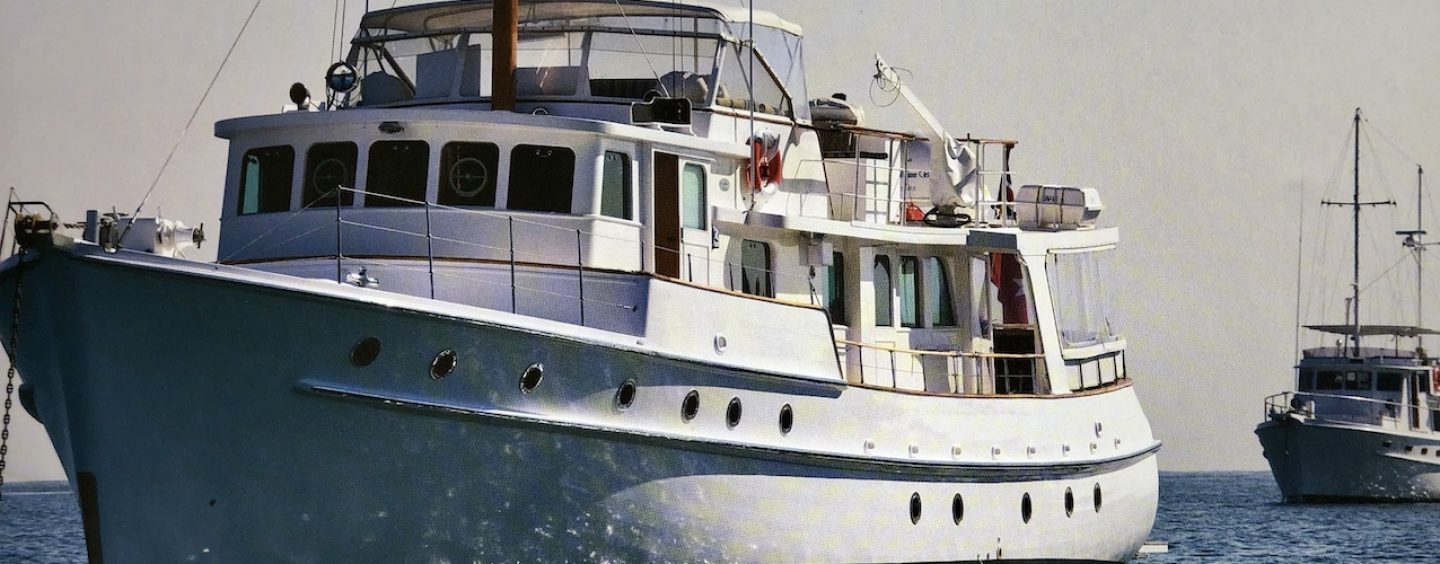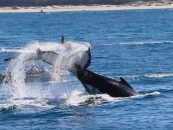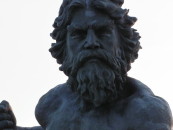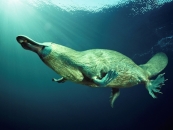Many Queenslanders will know the Cavill name from both the iconic Cavill Avenue in Surfers Paradise, and Cav’s Steakhouse in Labrador. However, just how many of the Gold Coast’s landmarks were transformed by the Cavill family will likely be news to even history buffs.
The Cavill family history dates back before the Surfers Paradise as we know it was created. That is because it was James “Jim” Cavill* who was responsible for coining the iconic Surfers Paradise name that is now world-famous. The significant list of Jim Cavill’s legacy includes building the Surfers Paradise Hotel back when the beachside town was known as Elston, and being one of the founding members of the Surfers Paradise Surf Life Saving Club.
THE SAILING CAVILL
Greg Cavill, Jim’s grandson and son of Darryl “Dick” Cavill, carried on the Cavill family tradition of hospitality, by running the iconic Breakfast Creek Hotel in Brisbane, which he took over from his parents. The hotel was immensely popular and was one of the first in the country to offer the now common drive-through bottle shop functionality. (The Cavill family’s lease expired in 1998, and the hotel was thereafter taken over by Austotel.)
If there was one thing Greg loved even more than his hotel, it was sailing. He began sailing at a young age, right out the front of his family’s hotel on the Breakfast Creek. Greg learned the ropes on a small trainee dinghy, but before long he progressed to a 12-metre ‘heavy weight’ sharpie, which he regularly raced with other members of the Royal Queensland Yacht Squadron.
During the 1950s and 1960s, Greg competed in a range of races. He had the honour of racing among the sharpies in the 1956 Melbourne Olympic Selection series. Unfortunately, his boat capsized, dashing his Olympic chances and nearly drowning him in the process. Greg hoped to race in the 1968 Olympics but was ultimately unsuccessful in being selected. However, showing his generosity of spirit, he lent his boat Jennifer to John Cuneo, who was selected and went on to win gold at the 1972 Olympics.
Greg was also highly involved in the Royal Queensland Yacht Squadron. He was an active member for over 60 years, and was one of the club’s most influential Commodores, serving from 1961 to 1963. During this time, Greg had the foresight to realise the importance of having a clubhouse and marina in Manly to allow for much easier ocean sailing access. The original clubhouse was located in Kemp Place near the city, and Greg successfully lobbied for it to be relocated to Manly. The construction was immense, requiring tonnes of soil to be dumped into the marshes before it could be built. The iconic oyster shell roof soon became famous, and the club has now gone on to become one of the largest yacht clubs in the Southern Hemisphere. To pay tribute to Greg, the original clubhouse was recently renamed the Cavill Building.
THE BOAT RESTORER
Greg’s passion for wooden cruisers ran deep, and he worked tirelessly to restore many boats, some of which were complete wrecks when he found them. Arguably the most famous of Greg’s restorations was Bali Hai II, a classic pilothouse-style cruiser, designed by Ron Wright. The boat was originally built for a Sydney businessman, whose partner was performing the lead role in the musical South Pacific, hence the name Bali Hai. After buying it many years after it was built, Greg had her stripped back to the ribs and fully refitted. The Cavill family then spent many years enjoying leisurely cruises up to Lizard Island and back.
Flying Saucer is a boat, which had more lives than a cat and was very sentimental for Greg. The boat was built by Norman Wright as a racing yacht in 1954. The following year, Greg was one of her crew when she won line honours and a race record in the Brisbane to Gladstone Yacht Race. In the following decades the boat was used as a sailing yacht and then converted into a fishing boat. In the early 1980s, Greg found the boat wrecked under a tree in Caloundra. He purchased Flying Saucer, and with the help of the Wright family, fully restored the boat, decking it out with his signature ring frames and plenty of family comforts.
Miranda is a classic Moreton Bay Cruiser that Greg rescued from serious disrepair. She was originally built in 1953 by the Wright and Watts families for a Brisbane grazier who owned it for many years. After purchasing it, Greg came up with a solution to ‘make her perfect’. He set about his most lavish restoration yet, complete with his signature teak trims and bronze fittings. The restoration was described by Ian Wright as ‘beyond original condition’. Greg himself is known to have remarked, “I could have comfortably built a new boat for less than the restoration, but what would be the point?” Miranda is currently back in the Cavill family, being sailed by Greg’s son, Peter.
Many of the boats Greg restored were ones that he had admired since childhood, and Rapid was no exception. Greg was trying to impress a girl on the jetty at Breakfast Creek. He was riding backwards on his tricycle along the jetty when he fell off and narrowly missed crashing into Rapid, a boat he later owned twice. Built in 1935 by Percy Tripcony during the depression, she was originally used in the Whitsundays. During WWII, the boat was commandeered by the Navy and used as a medical passenger boat. Rapid was then purchased by a regular patron of the Breakfast Creek Hotel, from whom Greg eventually managed to buy her. Greg enjoyed many fishing trips on Rapid and also sailed her in the Brisbane to Gladstone Yacht Race. Greg sold Rapid in 1956 when he was starting a family, and he did not see the boat again for 47 years, until he spied her in Southport. Greg repurchased Rapid and lovingly restored the boat, which is now owned by Greg’s son, Richard.
Riversong is the only one of Greg’s restorations that was not originally built in Queensland. Sydney builder, Cec Quilkley built her in 1981 in Taren Point. Originally the boat was used for game fishing. Greg found Riversong wrecked in a NSW river in 2000. He purchased her and embarked on another of his epic restorations, this time being performed by Catersons on the Gold Coast. Greg’s son, Peter, also purchased her in 2005, not wanting to let another of his father’s immaculate creations leave the family.
THE RESORT MOGUL
Arguably, Greg’s largest and most famous project was the construction of the resort on Moreton Island. Greg learned about the safety offered by the island’s harbours during his many fishing trips around Moreton Bay. When the old whaling business on the island closed down, Greg seized the opportunity and bought a lease of the land in 1963. Inspired by the Barrier Reef resorts, Greg and his family built Tangalooma Island Resort, which continues to operate today. They also planted all of the resort’s iconic palm trees. A luxurious location doesn’t mean much without transport, so Greg commissioned the Tangalooma ferry to be built. He also renovated and reopened a decrepit naval airstrip on the island so that guests could arrive by plane as well. In yet another act of foresight, Greg campaigned heavily for shipwrecks to be sunk off the resort. Today, the Tangalooma wrecks not only provide safer harbour for boats, but are also a big tourist attraction in their own right.
THE BEACON OF LIGHT
Greg Cavill passed away in 2017 at the age of 92.
In a touching way to honour the huge legacy of Greg Cavill, his family applied to Maritime Safety Queensland to have a navigational beacon named after him. Their application was successful and the ‘The Greg Cavill Beacon’ will reside at Canaipa Point in Moreton Bay. The beacon ceremony was recently held and was a special day for the Cavill family. The family hope that this beacon will both commemorate Greg’s love of Moreton Bay and will help mark many new boating adventures. In Greg’s own wise words, “A boat is only as good as the laughter that comes out of it.”
*Jim was an avid surfer who built a timber hotel in 1925 in a quiet beachside town of Elston. He named it the Surfers Paradise Hotel because it was close to a surfing beach he loved.
A few years later, he became one of the founding members of the local surf lifesaving club. Rather than being named the Elston Club, it was called the Surfers Paradise Surf Live Saving Club. In 1933, Elston was officially renamed Surfers Paradise, after campaigning from Jim and his friends.
A mysterious fire wiped out the hotel in 1933, but within a year, Jim had rebuilt the Surfers Paradise Hotel, which remained an iconic part of the Gold Coast for the next 50 years. As well as providing hospitality, the hotel was also home to one of the best privately owned zoos in the country.
In honour of all that Jim Cavill did for Surfers Paradise, the street the hotel fronted was named Cavill Avenue in 1945. Unfortunately, the hotel was demolished in 1987 during the construction of the Paradise Centre. However, the Cavill family continue to honour his love of both hospitality and the ocean to this day.
By Narayan Pattison



























